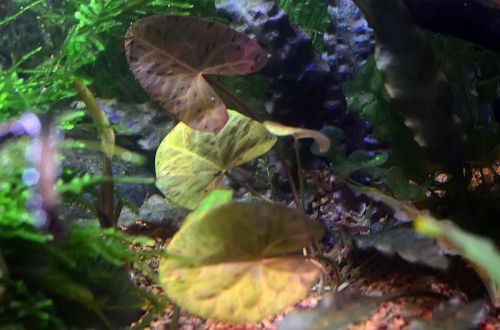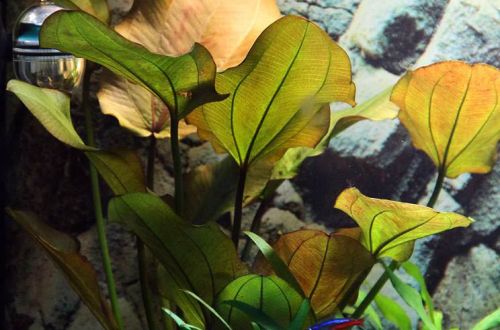
Nymphea pygmy
Nymphea santarem or Nymphea dwarf, scientific name Nymphaea gardneriana “Santarem”. The plant is native to South America. The natural habitat extends over a significant part of the Amazon basin. In nature, it is found in shallow water in sections of rivers with a slow flow, as well as in swamps and lakes.

One of its names comes from the region where it was first discovered – the city of Santarem in the Brazilian state of Para. The epithet “dwarf” began to be used because of the modest size of this plant, when compared with other Nymphaeums.
In favorable conditions, with intense lighting and high water levels, it forms a compact bush of several leaves collected in a rosette. The leaf blade is 4–8 cm long and shows olive green, brownish or reddish tones with subtle dark red specks.
When the water level is low, floating leaves develop, along with which the formation of arrows and subsequent flowering occurs. Floating leaves can be removed, but in this case flowers will not form. Flowering occurs at night.
Optimum conditions for growth are achieved in an environment with soft nutrient soil, warm slightly acidic water with low values of total hardness and a high degree of illumination. Lack of light leads to stretching of the petioles and fading of the color of the leaves. An additional introduction of carbon dioxide is recommended.




